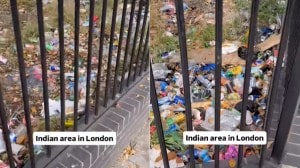Don’t fall silent now
It was around this time last year when scenes from Burma flooded our television screens, our airwaves...

It was around this time last year when scenes from Burma flooded our television screens, our airwaves and our newspapers as Britain — and the world — became glued to the unfolding “Saffron Revolution”. Thousands upon thousands of monks took to the streets to lead a popular uprising — appalled in part by the dire human rights situation in their homeland. And… those protests in Burma were met by brutal force from the ruling military junta. Hundreds were injured in the crackdown as the security forces unleashed a wave of batons and bullets. Official sources put the death toll at 13 — the real figure is believed to be far higher. Thousands were rounded up, monks were swept off the streets and a strict curfew imposed…
A year on it is time to once more remember the plight of those that remain and renew the call for urgent action from the United Nations security council. Nearly 1,000 people remain in detention for their part in those protests — each one is at risk of torture — and over 800 political prisoners have been sentenced to prison terms. The arrests themselves show what scant regard the Burmese authorities have for international opinion. In November 2007, the Burmese prime minister Thein Sein promised the global community that there would be no more political arrests. Yet just last month, Nilar Thein, the wife of an 88 Generation Student Group leader, was arrested while on a visit to her mother. Her baby daughter has been left in the care of relatives. On the eve of the crackdown, there were approximately 1,150 political prisoners in Burma. One year on, there are more than 2,100. And there are now more long-standing political prisoners in Burma than at any other time since the infamous August 8, 1988 uprising there 20 years ago, when 3,000 people were killed by the same military junta.
Excerpted from a comment by Kate Allen in ‘The Guardian’



- 01
- 02
- 03
- 04
- 05




























